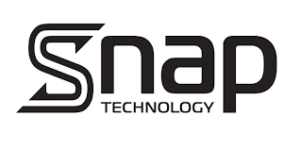Lattice Semiconductor took over the space previously occupied by Silicon Image, which Lattice acquired earlier this year (Lattice Semiconductor Closes Acquisition of Silicon Image).
The company was promoting SuperMHL (although the MHL group had its own booth as well) and was showing how HDMI at 4K60 could be sent over HDBaseT using the Display Stream Compression technology. Normally, HDBaseT can only send 4K30 across the interface. Later, HDMI itself is expected to be modified to allow the compression technology to be used.
There was a demonstration of the MHL “Alt” mode being used on a USB Type C connector. Lattice was making the point that the MHL mode uses fewer pairs of wires than DisplayPort, which means that more bandwidth is available for USB at the same time as 4K60 video. The MHL group is looking at “specific marking” for Type C ports with MHL. Lattice was showing a dock system that also support HDMI out as well as an option for DisplayPort.
We were impressed with the idea of the “Snap” technology, developed by SiBeam to use the firm’s 60GHz technology as a kind of “high speed NFC” connection. The technology allows very high bandwidth and low power connections when two devices are “snapped” together and supports USB protocols so that existing USB connectors can be replaced with a wireless link.
Lattice has developed the concept further to allow devices to communicate even with a 1cm gap between devices, now. Lattice pointed out that docking connectors are often both expensive and cause issue with, for example, rugged systems. If the docking connector can be omitted, it can save cost, but can also make waterproofing and ruggedisation easier. Data rates up to 12GBits are possible.
Lattice is working on “standard” 802.11ad WiGig as well as the proprietary SiBeam 60GHz wireless technology and had a USB dongle reference design. The company gave us a good update on the different approaches that are being used by Intel and Qualcomm for docking. Although both companies are using the same R/F and are interoperable at the baseband level, they use different video encoding. Intel is using no IPS stack in a more proprietary architecture (WDE), while Qualcomm is using a standard TCP/IP stack which, in Lattice’s view, gives better flexibility, although Intel can squeeze out better performance as it is “closer to the metal”.
Finally, Lattice was showing its WirelessHD technology which is shipping now and can support dual box TV designs, among other applications.
Analyst Comment
Although the message of the MHL Alt mode in USB Type C is a good one, we have yet to find anybody that plans to implement the technology in a source device. MHL is being used by LG and Samsung in some TVs, but the loss of MHL support from Samsung in the Galaxy S6 was something of a blow. We heard at CES that the Type C specification may have been finalised a bit too late to make it into the Galaxy S7 design. (BR)

